towards a parataxonomy of Tokyo
In an odd episode of synchronicity Laura saw the new film ‘LOST IN TRANSLATION’ *the same night we did*, albeit in a different city, (even though none of us ever goes to first run movies.)
The film invoked in me a profound nostalgia for the all too short couple of trips I have made to my favorite city- Tokyo. I remember relishing the sense of displacement and anonymity that I felt there, the constant state of *not understanding*, floating in wonderful liminal existence between feudalism and technopolis.
Last time I was in Shinjuku, I was staying with Ruth at a massive luxury hotel *exactly like the one in the film* while she attended to her Japanese book tour. Even the toilet was technologically advanced (its armamentarium of precision personal cleansing options took some getting used to)
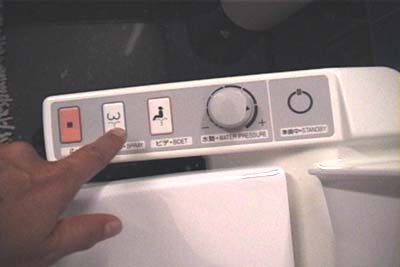
Japanese toilet control panel, Shinjuku, August 2000
One of the more interesting people that I got to swan about with in Shinjuku was the inimitable digital artist and cybernatrix, Shu Lea Cheang, who was in the midst of directing her epic robo-porn film I-K-U . (which BTW has a *very* cool website). Shu Lea’s hilarious account of trying to make her clone-sex version of Phillip K. Dick’s “Do Androids Dream of Electric Sheep” in the *real* demi-monde of 21st century Tokyo, was mind-bending to say the least. Shu Lea is the ultimate innovator and a cyber-nomad worth keeping an eye on.
Of course, when I am in Japan, I am a complete space alien (well even more so than usual . . .)
The visual field particularly in Tokyo is so visually dense that *I just walk around videotaping everything*, so I can try to understand it later. I have included some stills from little video clips that capture moments (for me) that qualify as Fetish:Footage because *I just can’t resist watching them over and over*
Here are some stills from my Parataxonomy of Tokyo:
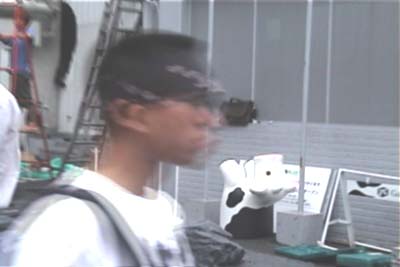
(I didn’t understand this)
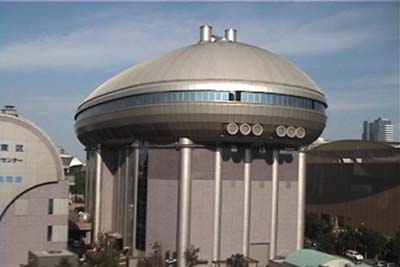
(buildings that look like spacecraft are common)
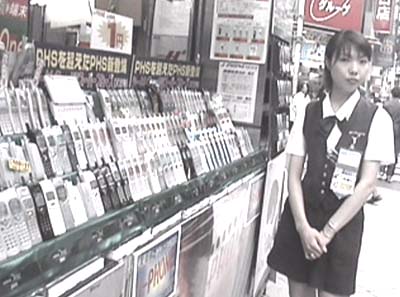
(cell phones were ubiquitious and (well) *better*)
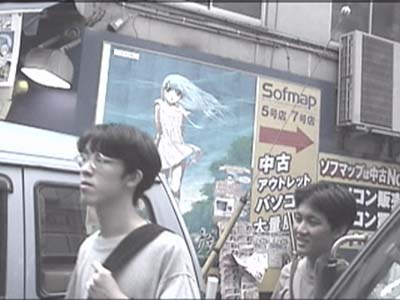
(otaku computer game coven prowling Akihabaras ‘electric town’)
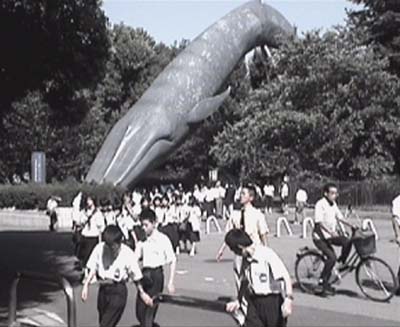
( I didn’t really understand this either)

( A woman making strange faces on Japanese daytime television)
Japan at that time was in the mid economic collapse. Despite the aura of technological utopianism, *every public park* was full of homeless day labourers, who *just couldn’t afford to live indoors* in the hyperinsane Tokyo housing market. A sea of blue tarps, these workers had established an entirely parallel economy within the confines of a highly attenuated urban commons, literally just within the spaces beneath the trees of Tokyo’s few parks. This shadow economy had evolved its own service industry- shoe repair people, barbers, cooks etc. to help the workers to survive. In effect, Tokyo’s parks have become refugee camps for the economically dispossessed. One has to wonder if the second richest economy on the planet refuses to create affordable housing for its lowest income people, what hope is there for the rest of the world?
One of the saddest images I remember, is of seeing unemployed ‘salarymen’ in their business suits and ties sitting in the park for eight hours a day, *pretending to be at work,* They couldn’t bear the crushing loss of face that they would suffer from telling their families that they had been made redundant.
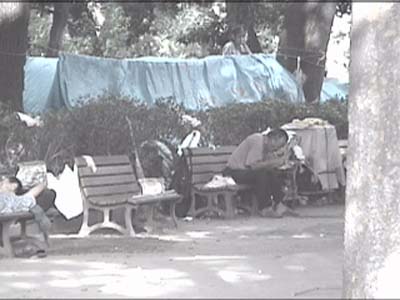
Shinjuku park (homeless day labourers)



